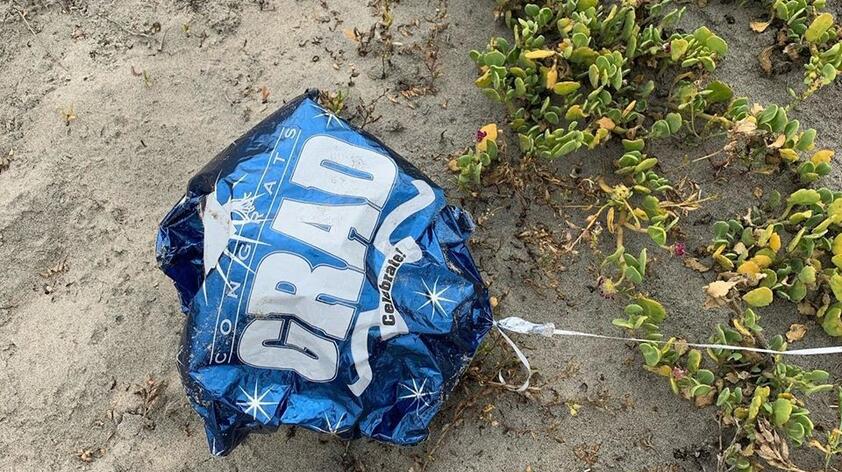
Distance yourself from balloons for a healthier environment
As social isolation has been our new normal for the last several months, many of us are still looking for ways to make our celebrations special. However, proceed with caution as you run out to grab your party-decorating supplies. If we want to help protect wildlife, there is one traditional party supply we should avoid: balloons!
During my daily work monitoring the endangered California Least Tern and threatened Western Snowy Plover, I walk along San Diego beaches where these two species nest. These shores are precious habitat: vital because long-lived terns return every year to raise their young while plovers may remain at the same site year-round.
Unfortunately, along with other types of garbage, we see countless balloons washed up on the beach, and they usually give us a clue about what people have been celebrating.
Recently, most of the balloons we’re seeing are from celebrations for the Class of 2020. Thus, these are not old, washed-up balloons and their presence demonstrates our ongoing habits and general unawareness about their negative environmental impact.
There are several important reasons why we should avoid balloons and instead replace them with a plastic-free or reusable alternative. Balloons are single-use items that are either destined for the trash after a few hours or let go to float away where they become litter and a potential hazard to wildlife.
Whether they are made from shiny Mylar or “biodegradable” latex, they remain in the environment for many years and often find their way into our waterways. While, balloons are notorious for tricking sea turtles into thinking they’ve found a tasty jellyfish, they can also be a hazard for seabirds and other animals. A 2019 study published in Scientific Reports found that “balloons or balloon fragments killed almost 1 in 5 of the seabirds that ingested them”. However, not only can balloons be mistaken for a meal and ingested, but any attached strings can get entangled in legs, wings, or other body parts.
While we should continue to celebrate those who are special to us during the COVID pandemic, we can also transition to better habits by avoiding balloons altogether. A few alternatives to liven up your celebrations include paper streamers, handmade signs and banners, flowers or plants, LED lights, and candles. These are just a few options that can be suitable for any occasion!
Even small changes can get us closer to much-needed environmental progress by preserving the beach habitats of breeding terns, plovers, and other local sensitive species to ensure they will continue to thrive after our lives return to normal. And you can feel better knowing you are making someone feel special while doing your part to reduce waste!
Rachel Vasseur is a field Research Assistant with the SDZG Terns and Plovers Team.













